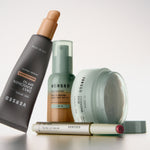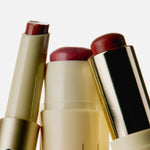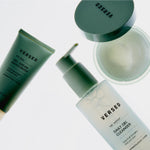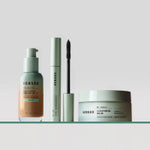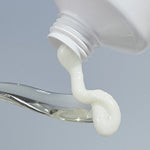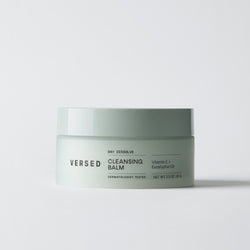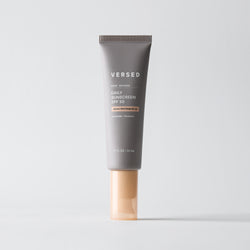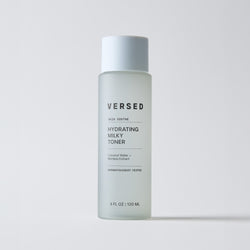Why are some complexions drier than others? How come we feel extra parched while traveling? Is there a reason skin texture feels extra crepey as we grow older? The answer to all these (and most of your dry skin questions) is an acronym you’ve probably seen before: NMF. It stands for Natural Moisturizing Factor and is one of the smart ways skin keeps itself bouncy and soft.
Like any skin function, there are habits that can throw skin’s NMF off-balance and there are things (hint: skincare) that can strengthen it. Keep scrolling to learn what skin’s natural moisturizing factor is and what ingredients help improve it.
What is Skin’s Natural Moisturizing Factor?
NMF is an essential part of the skin’s moisture barrier. Remember: Our barrier is like a brick wall, keeping the good stuff (water and oils) in and the bad stuff (pollution and bacteria) out. Each of the “bricks”—which are actually skin cells called corneocytes—contain natural humectants that grab moisture from the outside world and pull it in, keeping the barrier strong. The humectants that make up the skin’s NMF include amino acids and other ingredients you may recognize like lactic and hyaluronic acid, ceramides, and peptides. That’s why incorporating these humectants into your skincare routine (such as through a hydrating serum like the Moisture Maker Hydrating Hyaluronic Serum or the Antioxidant Cleanser), is so beneficial for all skin types.The benefits of a strong natural moisturizing factor are the same benefits of having a strong moisture barrier: Skin feels hydrated and elastic, is better able to fend off intruders, looks youthful, and experiences less inflammation and fewer breakouts.
What Affects Skin’s NMF?
No two complexions are alike and neither are their NMFs. Genetics determine the skin’s natural moisturizing factor, which is why some of us naturally have a dry skin type. If you have an inflammatory skin condition, such as eczema, you likely have a lower NMF. Our NMF also decreases over time, which is why dryness and crepey texture is a visible sign of aging skin. To combat that, apply a night cream like Recovery Mode before bedtime to help smooth fine lines and rough texture.Where you live makes a difference, too. If you live in a dryer climate, you probably have a higher NMF than someone who lives somewhere humid. That’s also why skin tends to feel more flaky and parched when you travel somewhere new: Your body isn’t used to the humidity levels and needs a few days to adjust its NMF. If your hometown gets cold and windy during the fall and winter months, add in heavier creams or facial oils to keep skin thoroughly moisturized.
How to Improve Skin’s NMF
You can’t technically change skin’s NMF biologically, but you can support it by applying humectants topically through skincare. Get your fix with polyglutamic acid, which is a humectant 4x as hydrating as hyaluronic acid, found in our Luminizing Glow Drops. For undereye dryness (and to smooth away signs of aging like crow’s feet) gently tap on a plethora of peptides with Zero-G.Don’t forget: Humectants work by pulling moisture from the environment, so apply them while skin is still slightly damp from cleansing or applying a toner like Baby Cheeks for best absorption.
Shop our favorite moisturizers and hydrators below.
